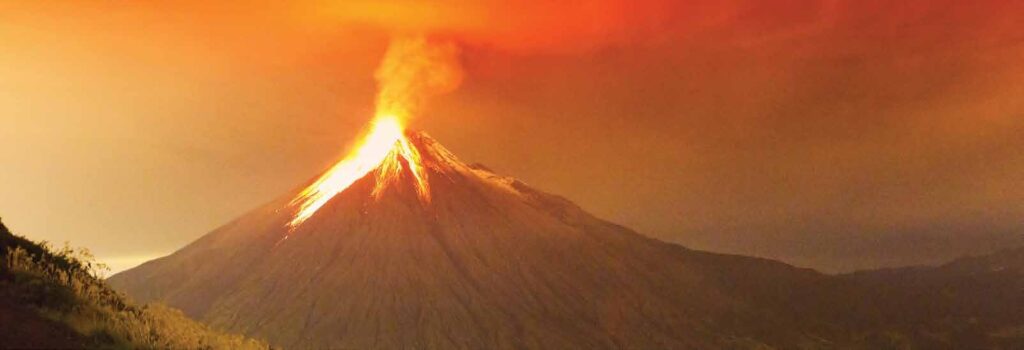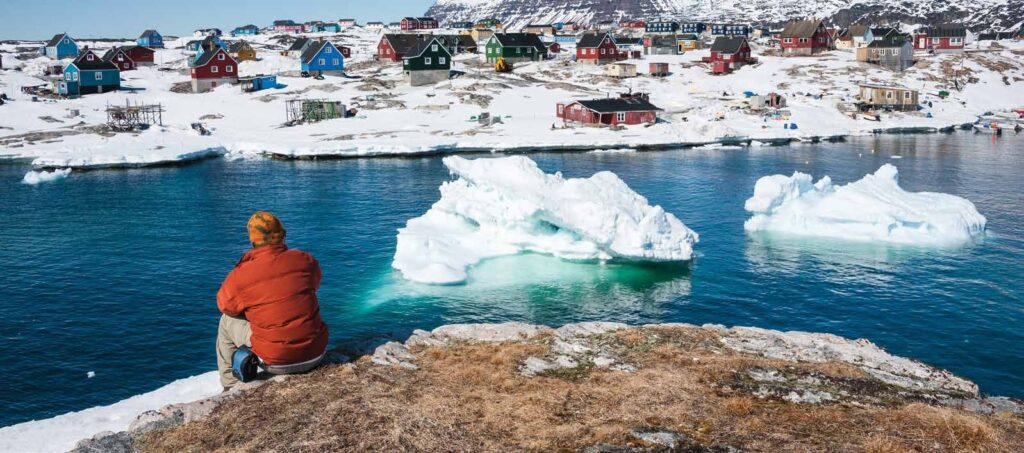Different parts of Earth have been warmer and colder at various times during the last thousand years. There were several decades when air temperature varied by a palpable 3°–4°C. Of course, there were no thermometers a thousand years ago (people have only been able to measure the temperature for the last 300 years) but surviving records of fertile (warm) and less fertile (cold) periods are evidence of significant climate fluctuations. Scientists have also drawn conclusions about temperature in the past from deposits at the bottom of seas and rivers and by using other signs. The annual growth rings of trees are a particularly good source of information.
Scientists explain periodic temperature fluctuations over decades by changes in solar activity, volcanic eruptions and processes occurring in the world’s oceans.
Variations in solar activity
The intensity of solar radiation varies periodically and has 11-year cycles. But observations that began as early as the 17th century also show cycles of change in solar activity lasting 40–45, 60–70, and 100-200 years.
Variations in solar radiation are usually slight, but when several periods of low solar activity come one after the other, the temperature on Earth falls substantially. This occurred, for example, from 1640 to 1715, a period referred to as the ‘Little Ice Age’.
That was when people in the Netherlands used to skate along the frozen canals of Amsterdam in the wintertime. Soon afterward the cold snap came to an end and the use of skates became much less common (Fig. 1.3.8).


Figure 1.3.8 Dutch people skating on a frozen canal. Engravings from the series Fashionable characters by Romeyn de Hooghe (Netherlands, 1682–1702)
Volcanic eruptions
What natural phenomenon amazes us most by its power and energy? The answer, surely, is the eruption of a volcano. Do you think that volcanoes heat up the Earth’s atmosphere or cool it down? At first glance, it seems that they must heat up the atmosphere. It is true that the hot lava and burning-hot gases raise the air temperature, but only near the volcano. What has the biggest impact on climate is not hot lava or gas, but volcanic ash. The eruption sends it high into the stratosphere, to altitudes of 10–15 km, where it stays for a long time. The ash blocks out some of the sun’s rays, because of which the whole planet gets colder.

Any powerful volcanic eruption, in which a column of ash reaches the stratosphere, causes short- term cooling a year later. For example, after the Napoleonic Wars in Europe, people wondered why the climate turned cold for several years. The reason was the eruption of the Mount Tambora volcano in what is now Indonesia (Fig. 1.3.9). The same thing happened in 1983 after the eruption of El Chichon in Mexico, and in 1992 after the eruption of Mount Pinatubo in the Philippines.
After two or three years the ash settles, and volcanoes cease to have an impact on the Earth’s climate until the next major eruption throws ash into the stratosphere.
Such huge eruptions are rare, and most of those we hear about do not affect the Earth’s climate. For example, the eruption of the volcano with the hard-to-pronounce name, Eyyafyad- layёkyudl, in Iceland in 2010 spewed a lot of ash, but only into the lower atmosphere. Aircraft all over Europe were grounded, but the ash settled quickly and did not spread around the globe.

Figure 1.3.9 Mount Tambora volcano on the island of Sumbawa in Indonesia. The massive eruption of 1815 caused its top part to collapse, forming a crater six km wide and one km deep
Ocean currents
It has been shown that the discovery a thousand years ago by Norwegian Vikings of Greenland coincided with a warm period. Hence the choice of name by the discoverers. Of course, even then Greenland was not completely green: glaciers covered the greater part of the island, as they do now, but the southern edge was ice-free and relatively warm. The reason for this was changes in ocean currents: when they are stronger the local climate becomes a little warmer; when they are weaker it gets colder. This behaviour by ocean currents has caused warmer and colder periods in various parts of the world.

The Earth’s climate has changed several times in the past. But never has the average temperature of the planet changed as fast as it is changing now: by nearly 1.2°C in 130 years. This unprecedented speed is not usual for natural processes. The fastest natural changes have always taken hundreds or thousands of years, which is a very slow rate of change by the measure of human life. Catastrophes where climate changes drastically in the space of one or two years might be the subject of a disaster movie, but they are far from reality and from what any scientist would forecast.
QUESTIONS
1
What has been the main factor of climate change over billions of years?
2
What ice-cream flavour melts slower in the sun: white vanilla or dark chocolate? Why? How does this illustrate processes that occur on Earth?
3
What major shift of lithospheric plates occurred 50 million years ago? What impact did it have on Earth as we now know it?
4
What do scientists use to find out the temperature and chemical composition of the atmosphere over the last 800,000 years?
5
Why do glacial periods occur?
6
When did the last glacial period end? Will there be another? Could it begin next year?
7
How did ancient people cross from Eurasia to America?
They had no boats, and the width of the Bering Strait is now 86km (you cannot see from one side to the other).
8
Do volcanoes heat up or cool down the Earth’s atmosphere?

TASKS

1
Lay a sheet of tracing paper on a map of the world, trace the outlines of Africa and South America and cut them out. Join up the cut-out continents.
Does it look as if they were once a single piece of land? What was that land called? What happened to it?
How did that affect the Earth’s climate? Why?
2
Experiment
Materials: Two small sheets of paper (white and black); two pieces of plasticine 4 cm long and 0.5 cm thick.
The experiment: Glue the pieces of paper together, so that the left half is white, and the right half is black. Stick the pieces of plasticine perpendicular to the sheet on its rear side, one piece on the white part and the other on the black. Place the sheet on its edge and hold it close to a lamp (preferably a strong lamp). The lamp will illuminate the paper.
Which piece of plasticine fell first as the lamp heated the sheet of paper? Why? Give an example of a similar process that occurs on Earth.
3
You already know that the climate on Earth at the time of the dinosaurs was warmer than it is now. For the world to be as warm again as when the dinosaurs lived, Antarctica would have to move far enough away from the South Pole for all its ice to melt.
Take a physical map of the world and given its scale, calculate how far in kilometres Antarctica would have to move before its centre is at 40° southern latitude.
Suppose that Antarctica moves at a speed of 2 cm per year. How many years would it take for a warming of the earth caused only by the motion of Antarctica that would be sufficient for dinosaurs to live on earth again?


